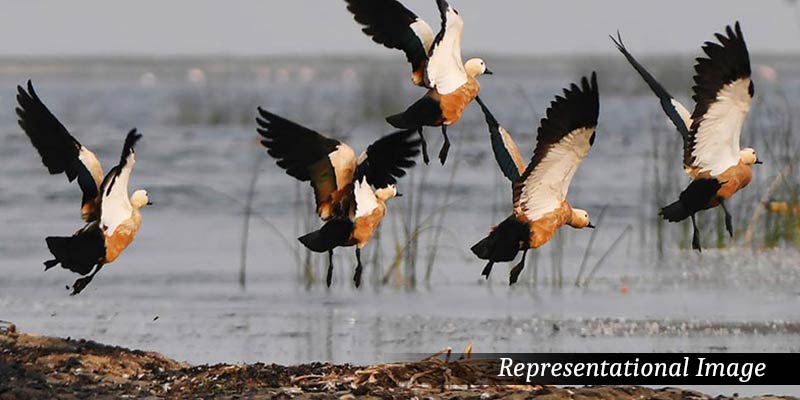- India
- Feb 16
Decline in migratory bird species in Saman Bird Sanctuary
• A decrease in number and species of migratory birds was recorded during the recent Asian Waterbird Census (AWC), 2023, carried out at Saman Bird Sanctuary in Uttar Pradesh’s Mainpuri.
• The Saman Bird Sanctuary is a seasonal oxbow lake on the Ganges floodplain.
• It is heavily reliant on the arrival of the south-westerly monsoon in July and August, which provides the vast majority of annual rainfall.
• The Sanctuary regularly provides refuge to over 50,000 waterbirds (187 bird species have been recorded) and is particularly important as a wintering site for many migrants including the greylag goose (Anser anser), with over 1 per cent of the South Asian population present during winter.
• Saman Bird Sanctuary was designated as a protected Ramsar site in 2019.
What is the Ramsar Convention?
• The Ramsar Convention is an international treaty signed by 172 countries to protect wetlands. It is named after the city in Iran where it was signed, and it began with 18 countries in 1971.
• The convention is one of the oldest inter-governmental accords for preserving the ecological character of wetlands. Also known as the Convention on Wetlands, it aims to develop a global network of wetlands for the conservation of biological diversity and for sustaining human life.
• It is one of the largest international agreements, after the Convention on Biological Diversity (CBD, 196 countries) and the UN climate agreement (UNFCCC, 197 countries).
• The Ramsar List is the world’s largest network of protected areas.
• There are over 2,400 Ramsar Sites around the world. The first Site was the Cobourg Peninsula in Australia, designated in 1974. The largest Sites are Rio Negro in Brazil (120,000 sq km), and Ngiri-Tumba-Maindombe in the Democratic Republic of Congo and Queen Maud Gulf in Canada. These Sites each cover over 60,000 sq km.
• The countries with the most Sites are the United Kingdom with 175 and Mexico with 142. Bolivia has the largest area with 148,000 square km under the Convention protection.
• In India, 75 wetlands covering an area of 1,326,677 hectares have been designated as Ramsar Sites of International Importance from India.
• The signatory countries promise to make inventories of their Ramsar Sites and to develop management plans. These management plans include the sustainable use of the many other functions of wetlands, such as food production, water storage and recreation.
Manorama Yearbook app is now available on Google Play Store and iOS App Store

